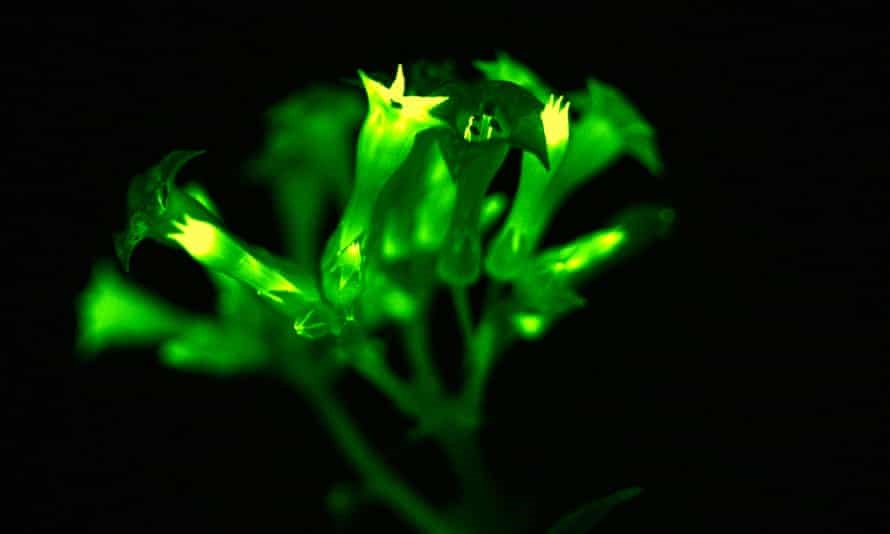
The next generation of glowing plants
Using specialized nano-particles, that store and gradually release light, embedded in plant leaves, engineers have created a light-emitting plant that can be charged by an LED. After 10 seconds of charging, plants glow brightly for several minutes, and they can be recharged repeatedly.
Researchers used Strontium aluminate, which can be formed into nano-particles, to create particles “light capacitor” a capacitor, which is a part of an electrical circuit that can store light in the form of photons, then gradually release it over time when needed.
Before embedding them in plants, the researchers coated the particles in silica, which protects the plant from damage.
The particles, which are several hundred nano-meters in diameter, can be infused into the plants through the stomata (small pores located on the surfaces of leaves). The particles accumulate in a mesophyll layer, where they form a thin film. The mesophyll of a living plant can be made to display these photonic particles without hurting the plant.
This film can absorb photons either from sunlight or an LED. The researchers showed that after 10 seconds of blue LED exposure, their plants could emit light for about an hour. The light was brightest for the first five minutes and then gradually diminished. The plants can be continually recharged for at least two weeks.
Researchers found that the “light capacitor” approach can work in many different plant species, including basil, watercress, tobacco, and Thailand elephant ear, which can be more than a foot wide — a size that could make the plants useful as an outdoor lighting source.
 English
English Arabic
Arabic


